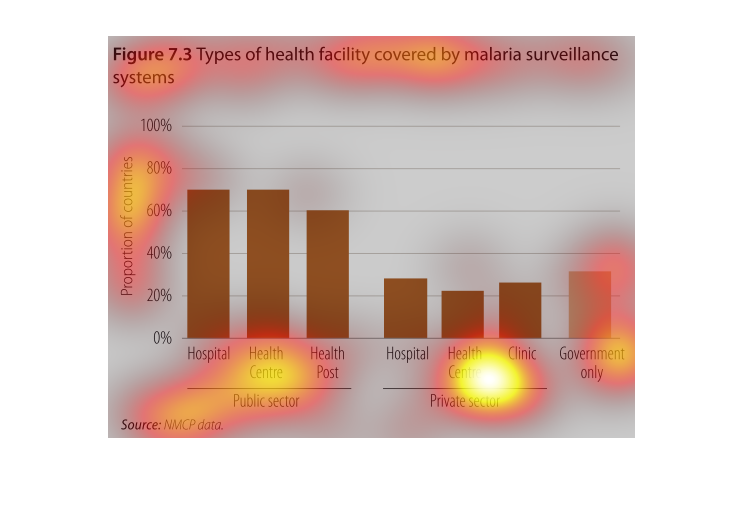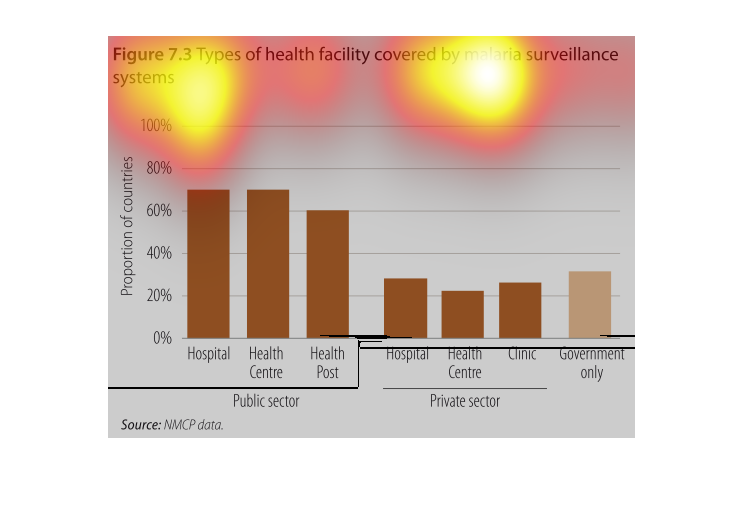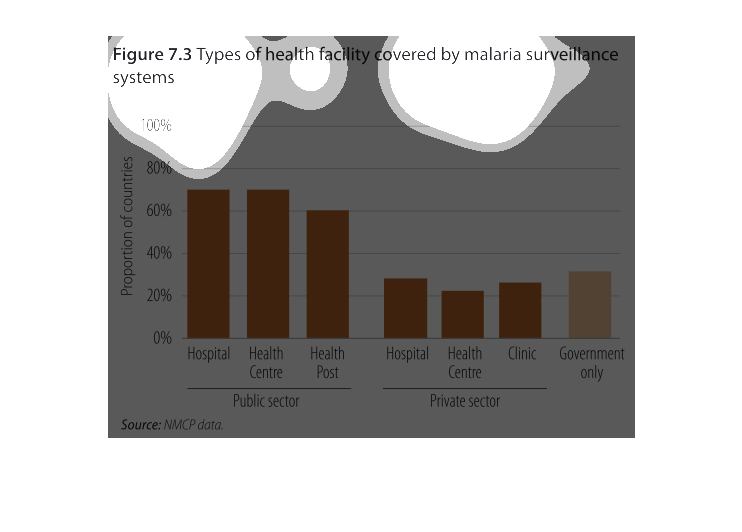
There are various types of health facilities that are there to assist and help keep an eye
on the malaria outbreak. The public facilities make up most of the coverage, such as the hospitals,
health centers and health posts . Private sectors are there as well; however, not as significant
as the public locations. There are actually more government only sectors than there are private
sectors.


This chart describes types of health facility covered by malaria surveillance systems. Categories
on the chart include hospital, health center, and health post.


Malaria has got to be understood completely if it is to be successfully vanquished. Luckily
many studies are being conducted to do just that. In this graph we see the different institutions
that chart the reported cases over time and how each contributes to the overall evaluation
of the situation.


This chart describes types of health facility covered by malaria surveillance system. Categories
on the chart include hospital, health center, and health post.


THIS BAR CHART SHOWS THE PERCENTAGE OF HEALTHCARE FACILITIES BY TYPE THAT HAVE MALARIA SURVEILLANCE
SYSTEMS IN PLACE. INCLUDES PUBLIC, PRIVATE AND GOVERNMENT FACILITIES.


The chart describes the types of health related centers that are used for malaria surveillance.
These include public hospitals, health centers and posts (I assume health outposts in rural
areas) which account for the majority of surveillance (roughly 70%). Privately owned health
centers, hospitals, and clinics account for roughly 30% of the surveillance, and then the
government run programs account for almost 30 as well.


This bar graph is a bar graph of the types of health facilities covered by malaria surveillance.
The public sector has the highest count, with hospitals being the biggest health facility


This graph shows the types of healthcare facility coverage by malaria surveillance systems.
Its split into public, private, and government sectors, and is ranked as a proportional %
of countries.


figure 7.3 types of health facility covered by malaria surveillance systems, hospitals and
health centers and health posts bear most of the burden in the public sector, followed minimally
by the private sector


This bar graph chart shows types of different health facilities that are covered by malaria
surveillance systems with seven types on health facilities on the horizontal axis and percentages
on the vertical axis ranging up to 80 percent


Types of health facilities covered by malaria surveillance systems. This graph portays the
percentage of types of facilities, such as hospitals, health centers, clinics, etc. that contain
surveillance systems. It also compares the percentages between public and private facilities.
The source of data comes from NMCP.


This is a graph that shows the types of health facilities that are actually covered by malaria
surveillance systems. it divides these facilities between those in the private sector and
those that are public.


This study tries to find the correlation between the reported incidents of malaria, and how
to better treat the decease. Hospitals and the like serve as the first line of defense against
these type of things.


The image depicts types of health facilities covered by malaria surveillance systems. Public
sector facilities appear to have much higher coverage versus private sector facilities, with
governmental only facilities only slightly higher than private sector.


The figure presented is titled Figure 7.3: types of health facilities covered by malaria surveillance
systems. The figure is a representation of malaria surveillance.
































